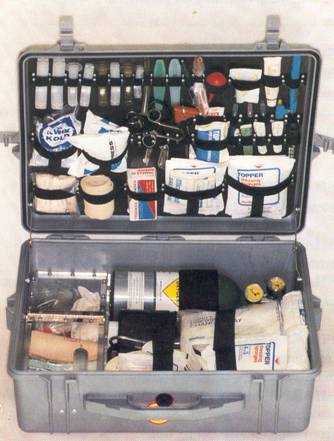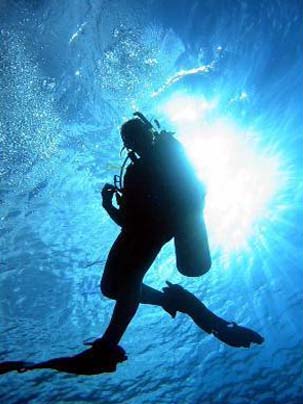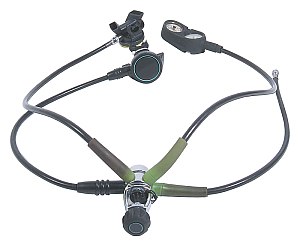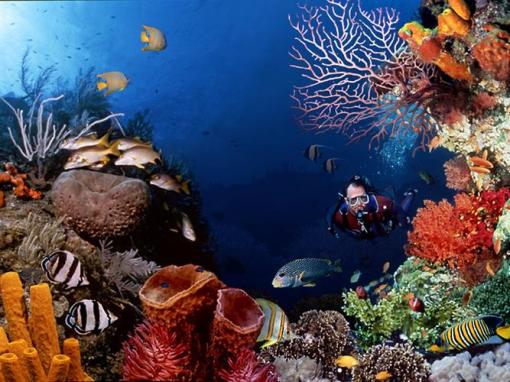
When people are this tightly packed together, it's too dangerous. An estimated 1.4 million people turned up for the Love Parade when the venue was capable of holding only 300,000.
(Photo from Billboard.com)
This isn't a very happy Daily Apple topic, I know. I'm choosing to believe that because I'll be giving safety tips, talking about prevention and avoidance, that will in the end make it a positive entry.
Strategies to avoid getting caught up in a crowd vary depending on how thick the crowd is, how pressed-together the crowd has become. So I'm going to start with early warning signs, things you can do before it gets tight, and what you can do at each stage from there.
- Get a map of the venue and find the exits. If it's an outdoor, multiple-street event, look for side roads that lead to larger thoroughfares that aren't part of the event and that will be less congested.
- Look for indications that organizers have put some thought into this event and are prepared to handle the crowd. You want to see methods of crowd control -- things that will help keep a crowd from getting out of hand in the first place, or ways that someone in charge can redirect a crowd or avert any problems.
- Good crowd control things to look for are:
- Barriers. These could be metal barricades, sawhorses, caution tape, ropes, etc. Yes, these are actually good things, not obstacles, because they help channel the group to a manageable size, and they'll keep sudden bottlenecks from forming.

Metal barricades like these at music or sporting events are actually good things. They'll help keep crowds from getting out of control.
(Photo from Blockader)
- Directional signs. Seems simple, but these do help because they tell people which routes are best, not which ones seem the most convenient at first but then turn out to be bottlenecks. If a lot of signs have been knocked down or walked over, that's an indication that the crowd could be getting too big.
- Police officers or security personnel, especially uniformed people who can see above the crowd. They could be standing on a building or even astride a horse. Higher vantage points will help them to see situations as they form and try to keep anything from getting out of hand. The fact that they're officials will also mean that they'll have more success than an average Joe at trying to redirect or split up a large crowd.

I know a lot of people out there don't like to see mounted police officers at concerts or popular events, but they can do a lot to keep crowds from getting dangerous. The fact that the officers at the Love Parade apparently didn't do much, well, that's another story. (Did you notice the velvet rope in this picture too? Another crowd control device at work.)
(Photo from Wikimedia Commons)
- Loudspeakers. These could be speakers set up on large stands, or they could be bullhorns that security personnel are carrying. Sometimes somebody's got to tell a crowd what to do or where to go. If there are a lot of people in the area, these things will be crucial at redirecting the foot traffic.
- If you're about to enter a crowded area and you don't see any of these types of crowd control, it could become a dangerous situation. Hang back until any clustering subsides, find a different route, or even turn around entirely.
- When you do join a large crowd, try to keep close to the edge if you can. This will give you the greatest freedom of movement and flexibility in case things start getting too bunched up.
- If you're already in the thick of a crowd, make sure you have enough personal space around you so that you can plant your feet and keep yourself stable, if necessary. They say there shouldn't be more than four people per square meter, but I don't know how big a square meter is. A good indication is that if you're being touched on all four sides, the crowd is too closely packed and you should seek an area that's less congested.
- If you get jostled and don't have enough room on the ground to plant a foot, it's really gotten too close. Time to make getting out of the crowd your main priority.

A crowd in the streets of New York after the Giants' Superbowl parade. Although this crowd is closely packed, the mounted and motorcycle police are close at hand, keeping an avenue open in the crowd. While there was some disorderly behavior, this crowd never really got out of control.
(Photo from The New York Times)
- In order to get yourself out of the crowd, experts say that it won't work if you turn around and try to press face first against the crowd. But you can sometimes move sideways as the crowd surges forward. Pull your arms in close to your body and don't try to push against the flow of the crowd but keep edging and zig-zagging among the people as they move forward until you reach the outer edge of the group.
- If you're in a tunnel, which was where the people at the Love Parade got stuck, working toward the edge wouldn't do any good. In that situation, experts say that if you can, move gradually backward. This seems a little dangerous to me because you wouldn't be able to see where you're going or to know if someone is going to run into you from behind. But the reason they say this is because the crowd will have bunched up due to a bottleneck ahead of you. It's only going to get more crunched together as more people press in from the back of the crowd. The only exit then is to the back.
- If you drop something, forget about it. Don't stop to pick it up or try to make the crowd stop or flow around you. Even if it's your purse full of irreplaceable photos of your dearest sweetest honey pie, you're better off with out it. In fact, at this stage, you're actually better off if you're not carrying anything.
- If you do fall down, curl up in that good old fetal position. Protect your head and your stomach from being kicked accidentally. If it's possible, try to roll toward the outside edge. But make sure to protect your more vulnerable parts.
Hopefully you'll never get to that point. Remember, just because a ton of people are heading over there, that doesn't mean that's the cool place to be or the place you need to be right this minute. Enjoy the show, but allow yourself the room you need to move and breathe, and stay safe.

The people in this crowd aren't pressing against each other. Everybody has enough space all the way around, everybody can easily keep both feet on the ground, nobody's panicked and nobody's pushing forward with a lot of demanding urgency. But clearly, they're all very interested in what's about to happen -- they've gathered at an annual feast day and they're all about to eat. Looks like a good crowd to me!
(Photo from Living in Sri Radhakund)
Sources
Amanda Ripley, How Not To Get Trampled at the Inauguration, Slate.com, January 19, 2009
wikiHow, How to Evade a Stampede of Shoppers
M. M. Rooni, Stampede Safety Precautions, Associated Content from Yahoo! March 9, 2010
Ask Metafilter, What's the best way to protect yourself if you're caught in a stampede? October 1, 2008

















































